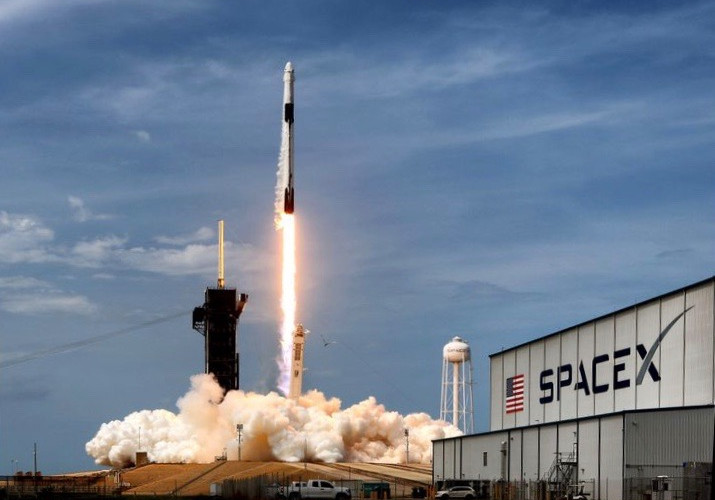The Revolution of Space Journey
- Surabhi Ashok

- Jun 9, 2020
- 3 min read
Updated: Sep 1, 2020
Source: Orlando Sentinel The private company, SpaceX, launches its rocket into the air, carrying NASA astronauts to the International Space Station for the first time in history.
On Saturday May 30th, Elon Musk's company, SpaceX, launched the rocket Falcon 9– Crew Dragon into orbit to the International Space Station (ISS). As NASA and SpaceX collaborated, two NASA astronauts made their journey in the capsule.
There is a huge significance to this launch, creating a new era of space travel. SpaceX became the first private business to take people into space, rather than a national organization.
The United States government retired their space shuttle program in 2011, nearly a decade prior. This moment brought back pride and nostalgia, as many remembered old NASA accomplishments and innovations. It gave people a sense of inspiration and hope in the midst of the pandemic and the racial and political turmoil in the country. People watching on television were in awe. As Elon Musk said, “I’m really quite overcome with emotion on this day.”
After founding SpaceX in 2002, the first three launches of Musk's Falcon 1 had failed. SpaceX couldn’t afford another failure, and thankfully the fourth rocket made it into orbit. From then on, the company continued to build its technology in order for this very event to occur.
Aboard the rocket were two astronauts, Robert Behnken and Douglas Hurley, selected by NASA to be the first people traveling in space capsules built by a private company. Lifting off at 3:22 P.M. from a launchpad in Florida that once served previous Apollo missions, the launch provides a lot of opportunity for the space industry in the future.
The Falcon 9 was completely controlled by teams of SpaceX employees in buildings on the ground. Hence, the two astronauts aboard didn’t have to do much. For a while though, they took over manual control to shift the position of the spacecraft.
Each stage of the rocket launch went smoothly. Usually the booster, the first stage of a rocket, falls into the ocean and becomes trash after it disconnects from the capsule. SpaceX found a way for the booster to instead return and precisely land back onto a predetermined area. On May 30th, that’s just what happened; the Falcon 9 booster landing vertically at Cape Canaveral. This allows the company to reuse its boosters which definitely saves a lot of money that would have been spent making new ones.
Once docked at around 10:30 A.M., Behnken and Hurley had to wait for three more hours in order for the air pressure to be equalized, making sure there were no leaks.
Less than a day after the official launch, the spacecraft successfully docked at the ISS. At 1:22 P.M., Bob and Doug stepped foot into the space station and were greeted by the three astronauts already presiding there. The Crew Dragon is certified for four months in space due to the risk that the solar panels might not be able to generate enough power to re-enter the Earth if the spacecraft is docked too long.
The completion of the journey was what NASA needed to confirm that this company’s shuttles could start taking astronautas to and from the station. Previously, they had relied on Russia to transport their Americans, paying money for seats.
Given the success of this launch, two more companies have already come forward to buy SpaceX capsules for the transportation of non-NASA passengers to the space station. These space tourists would go on trips in space, a feat that no one conceived could be a reality in such a short span of space exploration. Even the entertainment industry is delving into a possibility of leveraging these independent space capsules for their movies.
This SpaceX launch really revolutionized the space journey for the future generation. New projects and missions will arise as the data and technology evolve in the coming years.









Comments